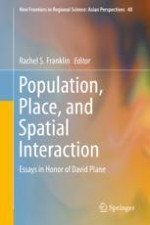2019 | OriginalPaper | Buchkapitel
11. Modelling Inter-urban Migration in an Open Population Setting: The Case of New Zealand
verfasst von : Omoniyi B. Alimi, David C. Maré, Jacques Poot
Erschienen in: Population, Place, and Spatial Interaction
Verlag: Springer Singapore
Aktivieren Sie unsere intelligente Suche, um passende Fachinhalte oder Patente zu finden.
Wählen Sie Textabschnitte aus um mit Künstlicher Intelligenz passenden Patente zu finden. powered by
Markieren Sie Textabschnitte, um KI-gestützt weitere passende Inhalte zu finden. powered by
